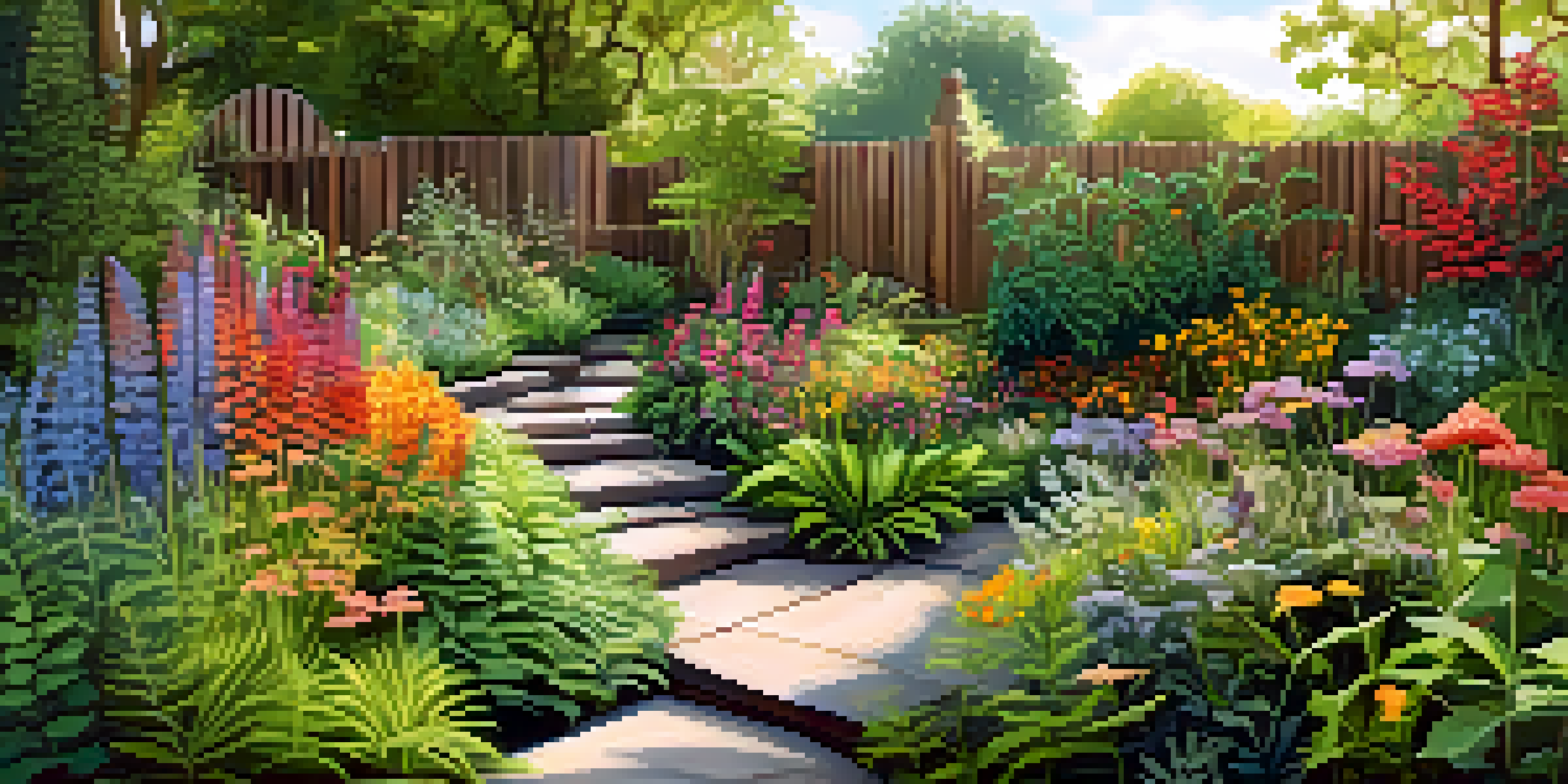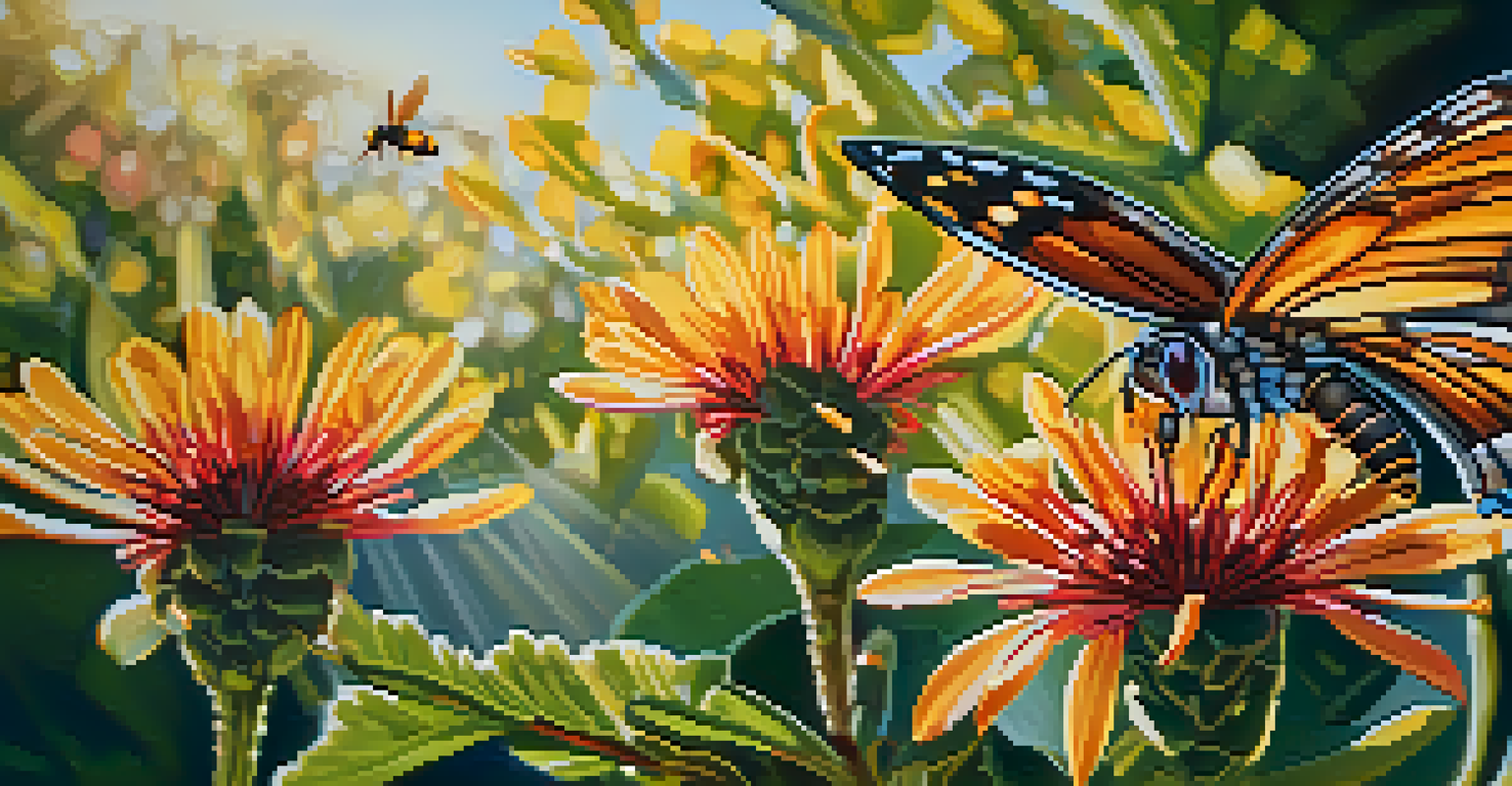How to Incorporate Native Plants in Urban Gardening

Understanding the Importance of Native Plants
Native plants play a crucial role in maintaining local ecosystems. They are adapted to the local climate and soil conditions, making them more resilient to pests and diseases compared to non-native species.
The greatest threat to our planet is the belief that someone else will save it.
Using native plants in urban gardening helps to support local wildlife, including birds, butterflies, and beneficial insects. This creates a more vibrant and balanced ecosystem right in your backyard.
Additionally, native plants often require less water and maintenance, making them an ideal choice for busy urban gardeners looking to create a sustainable garden.
Choosing the Right Native Plants for Your Area
Before you begin planting, it’s essential to research which native plants thrive in your specific region. Local gardening centers or extension services can provide valuable information on the best options.

Consider factors like sunlight, soil type, and space available in your garden when selecting plants. For example, if you have a shady area, look for native ferns or shade-tolerant wildflowers.
Benefits of Native Plants
Native plants enhance local ecosystems, support wildlife, and require less maintenance, making them ideal for urban gardens.
Creating a diverse garden with a mix of plant species enhances biodiversity and helps to attract various pollinators, enriching your urban gardening experience.
Designing Your Urban Garden with Native Plants
Once you've chosen your plants, it’s time to design your garden layout. Grouping plants with similar water and sunlight needs can simplify maintenance and create a more cohesive look.
To plant a garden is to believe in tomorrow.
Think about layering your plants as well. Taller native plants can provide a backdrop for shorter ones, adding depth and visual interest to your garden space.
Incorporate pathways or seating areas to make your garden more inviting. This encourages you and your neighbors to enjoy the beauty of native flora together.
Preparing the Soil for Native Plant Growth
Healthy soil is the foundation of a thriving garden. Start by testing your soil to understand its pH and nutrient levels, which can inform any necessary amendments.
Native plants often prefer well-drained soil, so consider adding organic matter like compost to improve soil structure and fertility. This encourages strong root development.
Tips for Successful Planting
Researching regional native plants and considering garden conditions are essential steps for creating a thriving native plant garden.
Avoid using chemical fertilizers or pesticides, as these can harm the beneficial organisms in your soil and disrupt the natural balance that native plants thrive in.
Watering Techniques for Sustainable Gardening
While native plants are generally more drought-resistant, they still need some care when establishing roots. Water them regularly during their first growing season to help them settle in.
Once established, native plants typically require less watering compared to non-native varieties. Consider using a drip irrigation system to conserve water and deliver it directly to the roots.
Mulching around your plants can help retain moisture and suppress weeds, making it easier to maintain your urban garden while supporting the health of your plants.
Creating Habitat for Local Wildlife
Incorporating native plants into your urban garden not only enhances its beauty but also creates habitats for local wildlife. Birds, bees, and butterflies thrive in environments that provide food and shelter.
Consider adding features like birdhouses, bee hotels, or water sources like small ponds or birdbaths to attract more wildlife. This creates a lively ecosystem that benefits everyone.
Engaging with the Community
Joining local gardening groups and participating in community projects fosters collaboration and promotes the use of native plants.
The presence of wildlife can also help with pest control in your garden, reducing the need for chemical interventions and promoting a healthier environment overall.
Maintaining Your Native Plant Garden
Maintenance is key to ensuring your native plant garden flourishes over the years. Regularly check for invasive species that may compete with your native plants and remove them promptly.
Pruning and deadheading can help encourage blooming and promote a tidy appearance. However, be cautious and research each plant's specific needs to avoid over-pruning.

During the growing season, keep an eye on water needs and adjust your care routine as necessary. A little attention goes a long way in keeping your urban garden thriving.
Getting Involved with Your Local Gardening Community
Joining local gardening groups or online forums can provide you with support and inspiration as you embark on your urban gardening journey. Sharing experiences and tips with fellow gardeners can enhance your knowledge and skills.
Participating in community gardening projects can also open doors to new friendships and collaboration opportunities in your area. Plus, it's a great way to promote the use of native plants on a larger scale.
Consider hosting workshops or open garden days to share your love for native plants with others. Educating your community about the benefits of native gardening fosters a greater appreciation for local ecosystems.